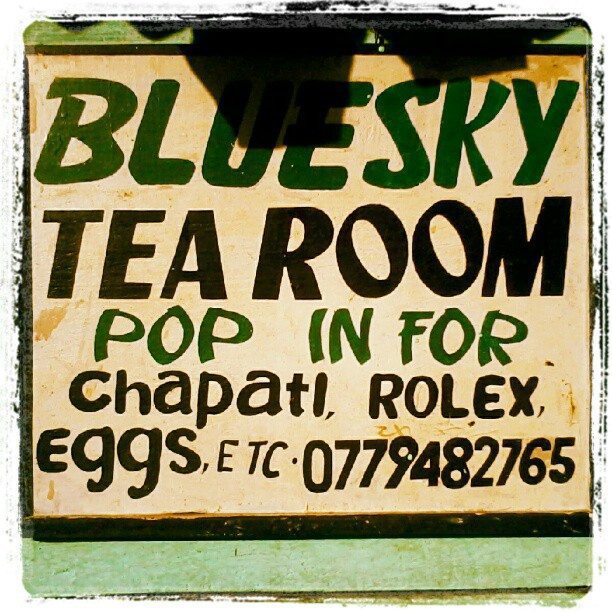Food stops are always a welcome distraction when rattling along African roads in overcrowded buses without suspension. In the past two posts, I told you all about the meat and fish options available. Today, I want to focus on veg varieties.
Top of my list is Tanzanian breakfast porridge.While you can find the flour in most markets, I found it as street food in only one place: Kilwa Masoko harbor. A lady had set up a business with three thermoses, five cups, and two benches. People waiting for the ferry would stop by, chat and have the porridge; a sweet tooth like me could add raw cane sugar. Later I learned that while liche bora is a traditional breakfast, it is usually not served outside the home.
The TaZaRa is brilliant for trying a variety of fruit snacks: on the Tanzanian side, snack vendors will appear at every stop, always selling different things like fresh roasted ground nuts, cut-up water melon or fried banana halves with piri-piri.
If you’re just looking for a quick refreshment, you can find fruit vendors in many places. Banana is available pretty much everywhere south of the Sahara. In Uganda’s capital, Kampala, ladies are selling sweet mangoes for a few cents. If you ask them nicely, they will cut it up, so it becomes a delicious fast food. In parts of Northern Ethiopia and all the way up to Egypt, cactus fruit is a quick and nutritious snack. Depending on where you are you get about four to six for a dollar. Don’t fear the thorns: the vendor will peel the fruit for you.
Chapati is a staple food all over East Africa. But the best chapati is made in Uganda. It’s more like a thick crêpe. In a little tea house at the edge of the Rwenzori Mountains, a man and his wife sell rolex: chapati rolled up with an omelet and some veggies inside. Add some English tea, and you have yourself a lovely breakfast, lunch or dinner.
Everyone knows falafel, right? Fried balls made from ground chick peas, served in bread with salad. In Egypt falafel is green. The best falafel is made by an old man in a side street in Luxor, not far from the Boomerang Hotel. One is about 30 cents. He wraps them in old school book pages. The neighborhood loves him, and so did I. His pop-up stand is open daily from 11 until he runs out. And no service during Ramadan.
Finally some street food of a different kind: because you and I are such good friends now, I’m sharing my recipe for the infamous Savannah crêpe. We were in Burkina Faso. A few miles after leaving the narrow, thorn-lined paths of Parc National Des Deux Balé one of the tires of the truck burst. While our driver Kev was getting ready to change the wheel somebody decided it might be fun to have pancakes. It was approaching 10 am and a baking 30°C in the shade. So why not make something that requires a fire? I volunteered. Needless to say that traveling on a truck (without a fridge) in Africa means you can neither carry eggs nor milk for long. So making crêpes requires a bit of creativity plus water, sugar, a pinch of salt, milk powder and custard powder. First, you mix milk following the instructions on the box; add the salt; stir in custard powder, the rough rule is that one tablespoon of custard powder replaces one egg yolk; add sugar to taste; fry in Chipsy (or your favorite fat); enjoy!
Inthe next installment, we’ll throw it all together when I talk about some more regional favorites.

